A Ventilation Coach for Opioid Overdose Bystanders Takes Top Prize at Inaugural Capstone Design Expo
The opioid overdose epidemic—which claimed more than 110,000 lives in the U.S. last year alone—has prompted an urgent need for accessible solutions to save lives outside of hospital settings. Maryland bioengineering seniors rose to the challenge in the Clark School’s inaugural Capstone Design Expo by developing a device that empowers bystanders and non-EMTs to properly and safely provide overdose victims with rescue breaths. Their capstone design project, “Accessible Ventilation Coach for Opioid Overdose Bystanders,” won the Dean’s Award (and a $1,000 prize) at the May 1 event, held on UMD’s College Park campus at the XFINITY Center. The bioengineering team’s innovative adjunctive device, which uses a printed circuit board, connects to a bag valve mask (BVM) and provides visual guide LEDs for the proper rate and depth of breath compressions, along with feedback LEDs synchronized with the user’s performance. An audio system also provides coaching during use, guiding users in real time to increase or decrease their speed or pressure of compressions. Advisors to the team were Associate Professor Ian White of the Fischell Department of Bioengineering and Robert E. Fischell Institute for Biomedical Devices, and physician scientist, entrepreneur, and Associate Dean for Innovation and Physician Science Development at the University of Maryland School of Medicine, Dr. Jason Rose. “The number one cause of death from opioids is respiratory failure,” explained team lead and Clark School senior Kelly Yeung, “so the best immediate treatment is to support respirations. But safe use of a BVM requires training: That’s why we developed this device, to empower people to perform life-saving breaths before EMS arrives,” said Yeung, who also works as an additive technician at Terrapin Works. “We’ve imagined that this could be similar to an automated external defibrillator for cardiac arrest—and stationed in similar locations.” The Capstone Design Expo brought more than 500 senior-level students from across Maryland Engineering’s civil and environmental, aerospace, mechanical, and bioengineering programs to present their capstone projects. Working under the guidance of faculty members and industry experts, students engaged in a year-long engineering project process that culminated in the design competition judged by experts in their respective fields. “I want to thank our students for designing these innovative engineering solutions to some of the grand challenges we’re facing. We are very proud. These projects point to your quality work and collaboration—and to your desire to make a difference in the world through engineering,” Clark School Dean Samuel Graham, Jr., told the participants at the event. Capstone Design Expo Photo Gallery
Civil and environmental engineering senior projects ranged from heat index and power outage emergency frameworks, to analysis of roadway infrastructure, to “cooler” solutions for bus stop design in Washington, D.C. Working under the guidance of Professor Deb Niemeier, the Clark Distinguished Chair in Energy and Sustainability, with senior project manager at Allan Myers Will Sigafoose as client contact, the department’s winning project, “Alternative Central Avenue Conduit System,” provides a case study in response to the Central Avenue Design-Build project in Baltimore and serves as a general guide for future conduit redevelopment projects. “The students are eager to show what they’ve accomplished, not only solving engineering problems but helping to solve ethical and social issues, too,” said Nii O. Attoh-Okine, chair of the Department of Civil and Environmental Engineering. “It’s not all about profit, but it’s about answering the question, ‘how did we touch others with our design’?”
Bioengineering and biocomputational engineering majors worked to make medicine safer, more effective, and more accessible through projects that aim to improve current standards of care for treating aneurysms, diagnosing Covid-19, improving the tracheostomy process, and more. The winning team’s project, “A Modified Syringe Design to Simplify the Preparation of Weight-Based Pediatric Medication,” proposes a cost-effective, user-friendly, syringe-like device that features an adjustment dial to reduce risk of error and improve pediatric patient outcomes. Project judge Matthew Dowling ’12 is founder and chief scientific officer of biotechnology research company Medcura and a member of the department’s advisory board. Having participated in departmental capstone showcases for several years, he said he always enjoys the interaction with students. “I get to hear how they’re learning about bioengineering and applying what they learn,” he said. “It’s great how they’re partnered with clinicians who introduce them to real, unmet needs—that’s huge.”
Alison Flatau, chair of the Department of Aerospace Engineering, called the Capstone Design Expo “a fantastic opportunity for students and faculty.” She said she was impressed with how well teams of more than twenty students tasked with mission challenges were able to integrate their pieces of the larger, system-level scope. “It gave me a great sense of pride seeing how well prepared our students are for taking on the big and high-impact challenges that are ahead of them.” Project judge Megan Bock ’06, M.Eng. ’10, a missions systems engineer at NASA Goddard Space Flight Center, remembers her own capstone process as a Clark School student. “I know what the capstone experience did for me. I learned a ton, and it was probably the most realistic simulation of life as a NASA engineer,” she said. That’s why she returns to campus: “I view this as part of the cycle of life, and I want to come back and see who I’m going to be working with someday.”
Harry Dankowicz, chair of the Department of Mechanical Engineering, noted the enormous diversity—and coverages—he saw at Capstone Design Expo. “Even in different engineering disciplines, our students are often tasked with the same kinds of challenges, and they have to bring in tools from outside of what they’re immediately learning,” he said. “There’s both the diversification of the problems and the convergences that really make a difference to solutions.” As executive vice president and chief operating officer at the Housing Authority of Baltimore City, mechanical engineering alumna and project judge Monica Watkins ’94 is always on the lookout for tomorrow’s engineers. “I have made it my personal mission to be involved,” she said, and she liked what she saw. “What I’m observing is the thought process—the intentionality, the critical thinking, the strategic planning and design. We value those skills. Not just that you’re an engineer, but that you have the mindset to work through problems and recommend solutions that we may not have considered.” For the Dean’s Award winners, the team is looking ahead to what’s next for their medical device to empower opioid overdose bystanders. “I was super stoked to hear from everyone that they wanted to see this go to market and that they see this as a viable solution,” said Yeung. “Moving forward I want to see where this goes. I think it could be something big.” To read more about all 98 student teams, visit the Capstone Design Expo site.
Related Articles: May 8, 2024 Prev Next |


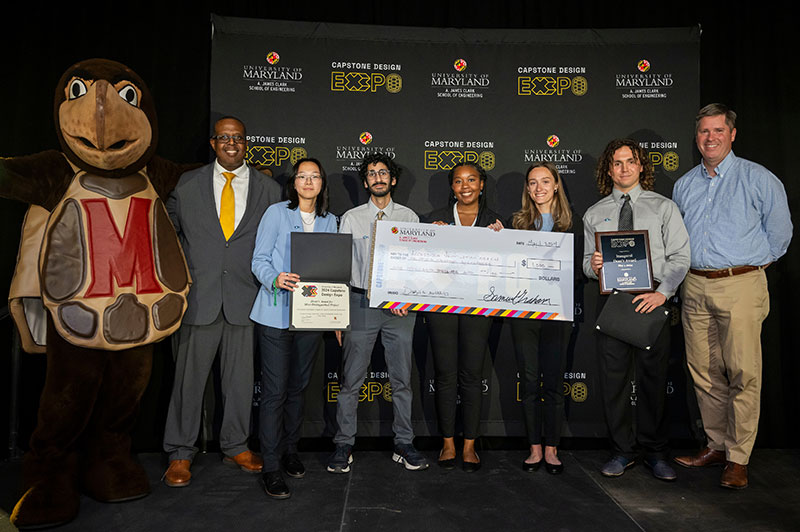
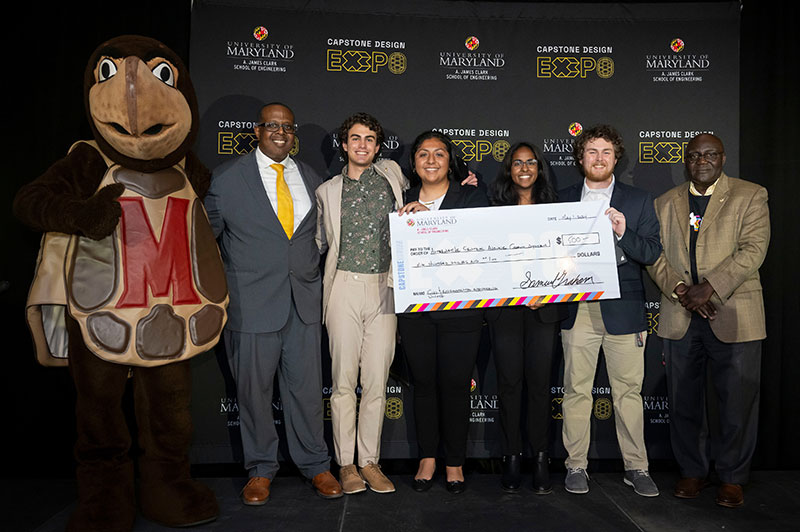 A project judge for civil and environmental engineering,
A project judge for civil and environmental engineering, 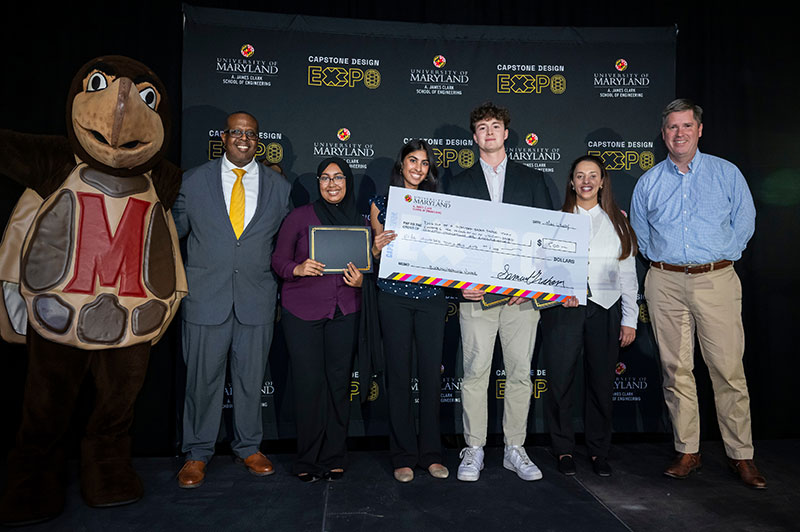 Fischell Family Distinguished Professor and Fischell Department of Bioengineering Chair
Fischell Family Distinguished Professor and Fischell Department of Bioengineering Chair 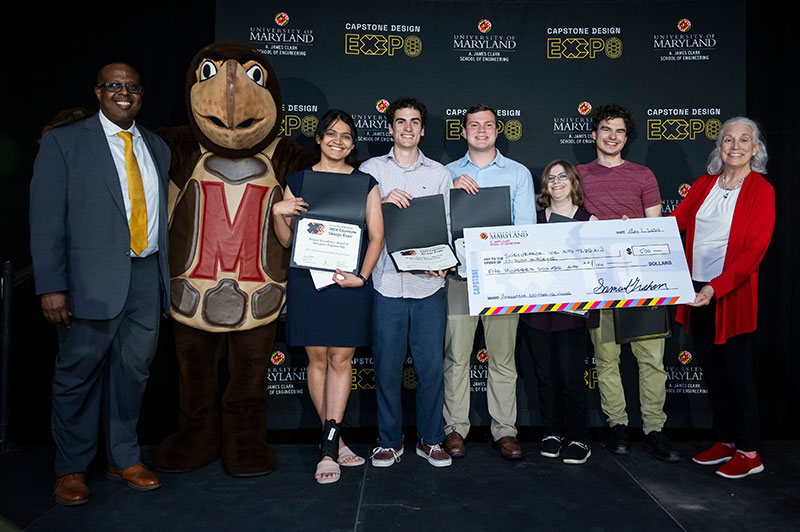 Aerospace engineering seniors built innovative space and air system designs. Among the projects for lunar exploration was departmental winner “
Aerospace engineering seniors built innovative space and air system designs. Among the projects for lunar exploration was departmental winner “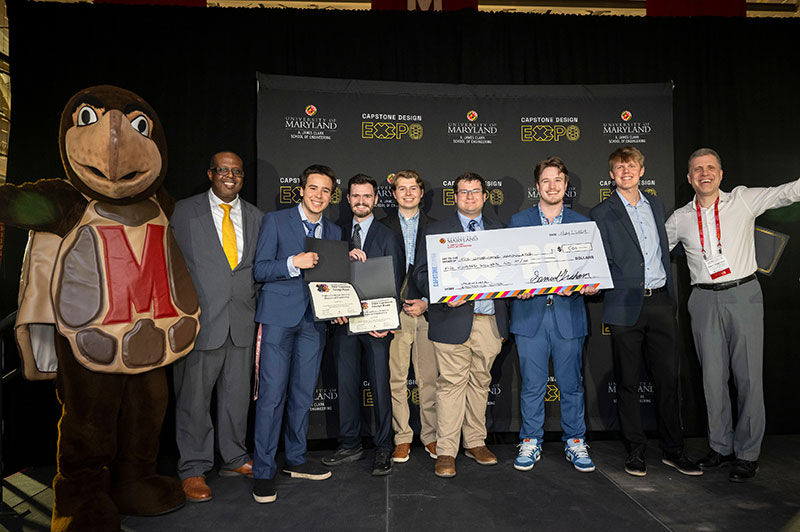 The latest iterations of the
The latest iterations of the